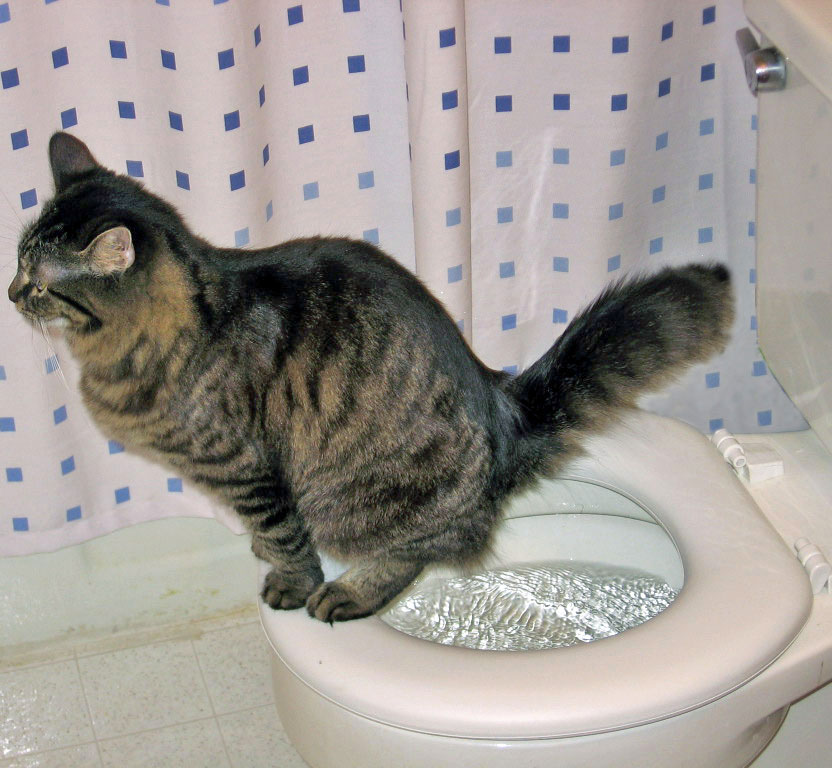The author is making several great annotation about Can You Flush Cat Poo or Litter Down the Toilet? overall in this article beneath.

Intro
As feline proprietors, it's important to bear in mind how we dispose of our feline buddies' waste. While it might appear practical to flush feline poop down the toilet, this method can have harmful repercussions for both the environment and human wellness.
Environmental Impact
Flushing feline poop introduces dangerous microorganisms and bloodsuckers into the supply of water, posturing a substantial threat to marine ecosystems. These contaminants can negatively influence aquatic life and compromise water high quality.
Wellness Risks
Along with environmental problems, purging cat waste can additionally position wellness dangers to human beings. Cat feces might contain Toxoplasma gondii, a bloodsucker that can create toxoplasmosis-- a potentially serious illness, especially for expectant females and individuals with weakened body immune systems.
Alternatives to Flushing
Fortunately, there are safer and more accountable methods to dispose of cat poop. Think about the complying with options:
1. Scoop and Dispose in Trash
One of the most usual approach of dealing with cat poop is to scoop it into a biodegradable bag and throw it in the trash. Be sure to use a dedicated clutter inside story and take care of the waste without delay.
2. Usage Biodegradable Litter
Choose biodegradable pet cat trash made from products such as corn or wheat. These trashes are environmentally friendly and can be securely thrown away in the trash.
3. Hide in the Yard
If you have a lawn, consider hiding cat waste in a marked area away from veggie gardens and water resources. Be sure to dig deep adequate to avoid contamination of groundwater.
4. Mount a Pet Waste Disposal System
Invest in a pet garbage disposal system especially created for cat waste. These systems utilize enzymes to break down the waste, reducing odor and environmental effect.
Conclusion
Liable pet ownership extends past giving food and shelter-- it likewise entails proper waste administration. By refraining from flushing cat poop down the commode and going with alternate disposal techniques, we can lessen our environmental impact and protect human health.
Why Can’t I Flush Cat Poop?
It Spreads a Parasite
Cats are frequently infected with a parasite called toxoplasma gondii. The parasite causes an infection called toxoplasmosis. It is usually harmless to cats. The parasite only uses cat poop as a host for its eggs. Otherwise, the cat’s immune system usually keeps the infection at low enough levels to maintain its own health. But it does not stop the develop of eggs. These eggs are tiny and surprisingly tough. They may survive for a year before they begin to grow. But that’s the problem.
Our wastewater system is not designed to deal with toxoplasmosis eggs. Instead, most eggs will flush from your toilet into sewers and wastewater management plants. After the sewage is treated for many other harmful things in it, it is typically released into local rivers, lakes, or oceans. Here, the toxoplasmosis eggs can find new hosts, including starfish, crabs, otters, and many other wildlife. For many, this is a significant risk to their health. Toxoplasmosis can also end up infecting water sources that are important for agriculture, which means our deer, pigs, and sheep can get infected too.
Is There Risk to Humans?
There can be a risk to human life from flushing cat poop down the toilet. If you do so, the parasites from your cat’s poop can end up in shellfish, game animals, or livestock. If this meat is then served raw or undercooked, the people who eat it can get sick.
In fact, according to the CDC, 40 million people in the United States are infected with toxoplasma gondii. They get it from exposure to infected seafood, or from some kind of cat poop contamination, like drinking from a stream that is contaminated or touching anything that has come into contact with cat poop. That includes just cleaning a cat litter box.
Most people who get infected with these parasites will not develop any symptoms. However, for pregnant women or for those with compromised immune systems, the parasite can cause severe health problems.
How to Handle Cat Poop
The best way to handle cat poop is actually to clean the box more often. The eggs that the parasite sheds will not become active until one to five days after the cat poops. That means that if you clean daily, you’re much less likely to come into direct contact with infectious eggs.
That said, always dispose of cat poop in the garbage and not down the toilet. Wash your hands before and after you clean the litter box, and bring the bag of poop right outside to your garbage bins.
https://trenchlesssolutionsusa.com/why-cant-i-flush-cat-poop/

Do you enjoy reading about Don’t flush cat feces down the toilet? Give feedback below. We'd be pleased to hear your views about this blog. Hoping that you visit us again before long. So long as you appreciated our blog entry please make sure you remember to pass it around. Thanks so much for your time spent reading it.
Call Today